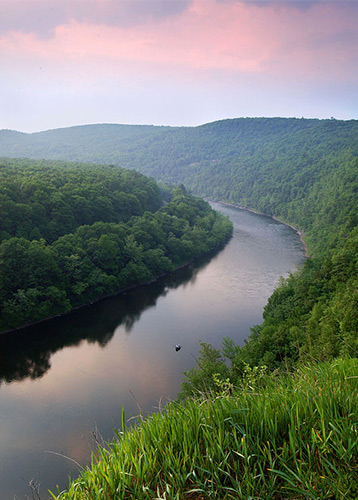Newton Creek Dredging Task Force
The Newton Creek Watershed is located in Camden County New Jersey with its headwaters located in suburban Collingswood, Haddonfield and Haddon Heights and its confluence with the Delaware in the City of Camden. The Newton is a small (13.6 sq mi), urbanized watershed consisting of 11 municipalities. It is approximately 38% Multiple historic mill dams have created several manmade lakes that are now extremely popular parks.
As a result of past and present land use, including industrial in Gloucester and Camden cities, as well as densely developed, older residential with little or no stormwater management infrastructure, water quality in the Newton Creek does not meet state water quality standards. In fact, it is listed as an “impaired waterway” by the NJ Department of Environmental Protection (NJDEP) indicating that it does not measure up to the standards required for maintenance of healthy aquatic communities of wildlife, especially of fish and smaller creatures at the base of the food chain. Based on DEP assessments, Newton Creek is characterized as having excessive siltation, nutrient enrichment, inadequate stormwater management, diminished stream base flows, nonpoint source pollution impacts, degraded habitat, and frequent nuisance flooding.
Over the past 15 years, the Delaware Riverkeeper Network has been actively engaged in a variety of efforts ranging from water quality monitoring, the preservation of Saddlers Woods, an old growth forest, advocating for riparian buffers, design and installation of several green stormwater infrastructure, trained volunteers to photo-document nonpoint pollution sources, leading stormwater driving tours and even sponsored a snakehead fishing contest.
Camden County is now proposing to dredge 260,000 cubic yards of sediment from the Newton and its largest tributary, the Peter’s Creek. DRN and other members of the Newton Creek Dredging Task Force submitted joint comments to NJDEP on Camden County’s proposed 260,000 CY dredging project. The Newton and Peters are older, suburban watersheds and so, like many similar communities throughout the Delaware River Watershed, are recipients of large volumes of sediment and urban nonpoint pollution. Our comments focused on protecting sufficient areas of shallow water littoral zones that provide important aquatic habitat and wadding bird foraging area and the choice of dewatering technology. Not all dewatering is the same with some allowing significant amounts of dredged contaminants to actually flow back into the waterway. DRN’s strategy that we believe will result in better post-dredging water quality started with meeting with the County to discuss what actions need to be taken upstream to reduce the volume of runoff and increase infiltration. We focused on the many innovative stormwater green infrastructure in this watershed. Our strategy also included calling and meeting with NJDEP permit review team to establish a relationship with them, walking the dewatering sites, partnering with the impacted stakeholders, including fishing clubs, municipal environmental commissions and Sustainability Teams and making sure our comments not only pointed out our areas of concern, of which there were many, but also any positive aspects in the permits.
Image: Western portion of project near Route 168.




